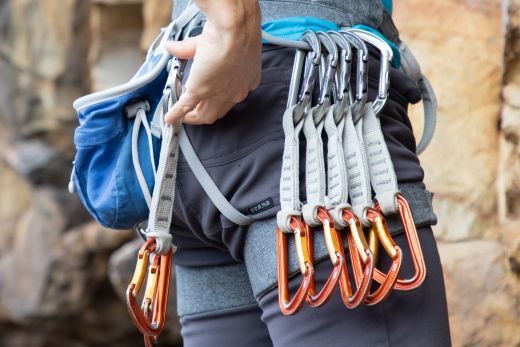To a pumped and panicked climber, there’s no sweeter sound than the metallic ‘click’ of a quickdraw snapping shut. Success, safety, progression – this sound conveys many good things. But let’s backup just a second to the point at which the rope is about to be pushed through the carabiner’s gate. It’s here that a quickdraw’s features can determine whether you make or fumble a clip. Carabiner size, gate type, and dog bone width – they can all make clipping easier or more difficult, which is why many climbers will give serious thought to these features before making a purchase decision. Because you are one of these discerning climbers, you’re made the wise decision to read this article and learn everything you need to know before choosing your next set of quickdraws. Good on you. Below you will find everything you need to know about choosing your next set of quickdraws.
- Quickdraw features
- Size, weight and clipping performance
- Quickdraws for different types of climbing
- How to set up your quickdraws
- How to rack quickdraws
- How many quickdraws do you need?
- What if you need a longer extension?
Quickdraw features
Carabiners vary in size, shape and gate type, and dog bones come in different thicknesses and lengths. Each of these factors affects a certain aspect of how a carabiner performs and handles.
Carabiners
Every quickdraw has a bolt-side carabiner and rope-side carabiner. Given that these have different purposes, it makes sense that they’re chosen for different characteristics. A bolt-side carabiner has to be easy to unclip from a bolt (and not get caught on the hanger), and a rope-side carabiner has to be easy to clip the rope into. But there’s another reason you wouldn’t want to mix these up. Bolt-side carabiners become scarred with use, and you don’t want to subject your rope to unnecessary wear by running it over metal burs.
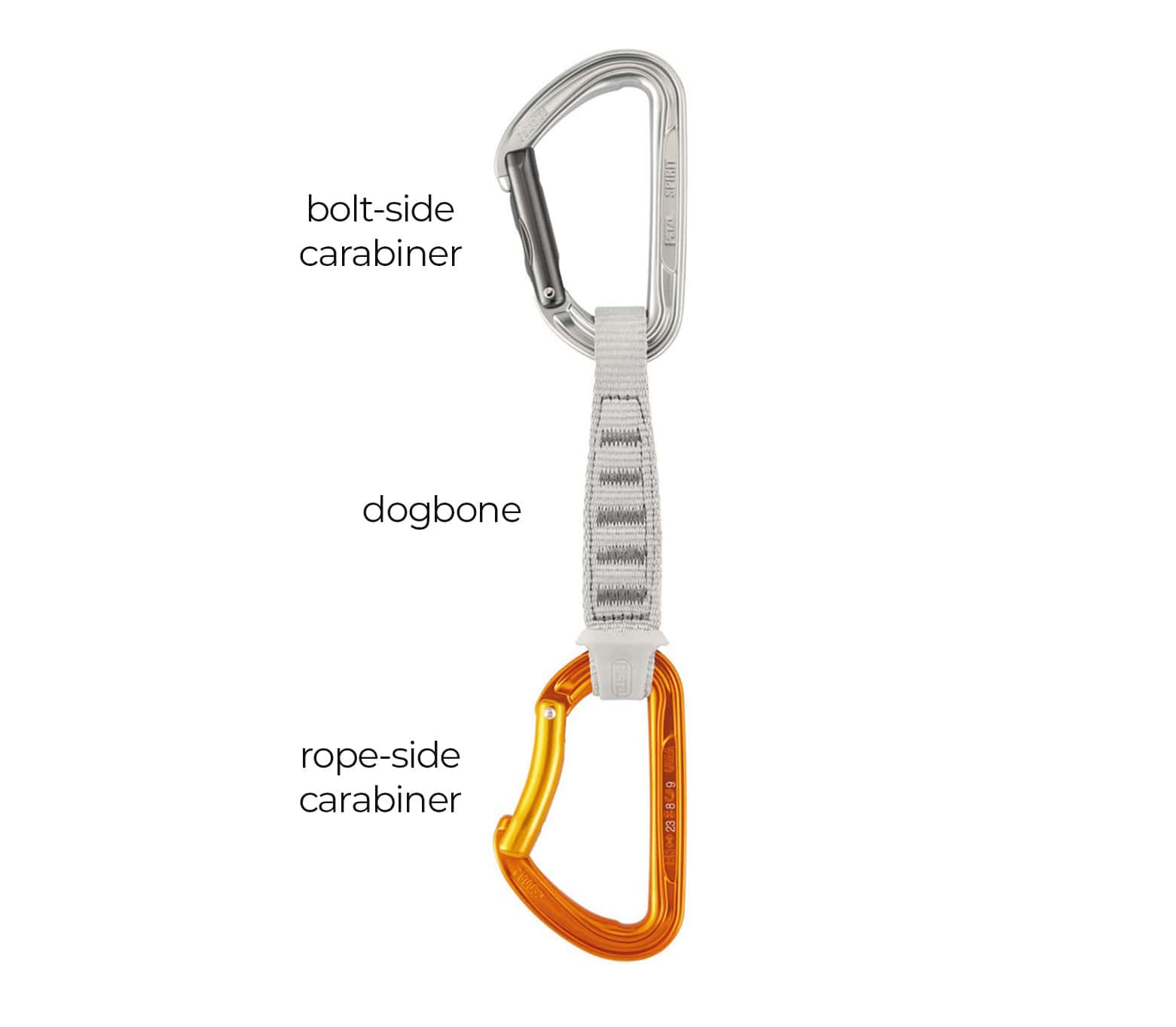
Beyond this rope-vs-bolt distinction, there are few other carabiner design features you need to consider when choosing quickdraws.
Wire gates vs solid gates
A wire-gate carabiner is just that – one made from a piece of wire shaped like an elongated U. The minimalism of this design makes these carabiners lighter and less prone to gate flutter than solid-gate carabiners (more about flutter in second). The only downside to wire-gates is that most have notched noses, which make them more likely to get caught on bolt hangers.
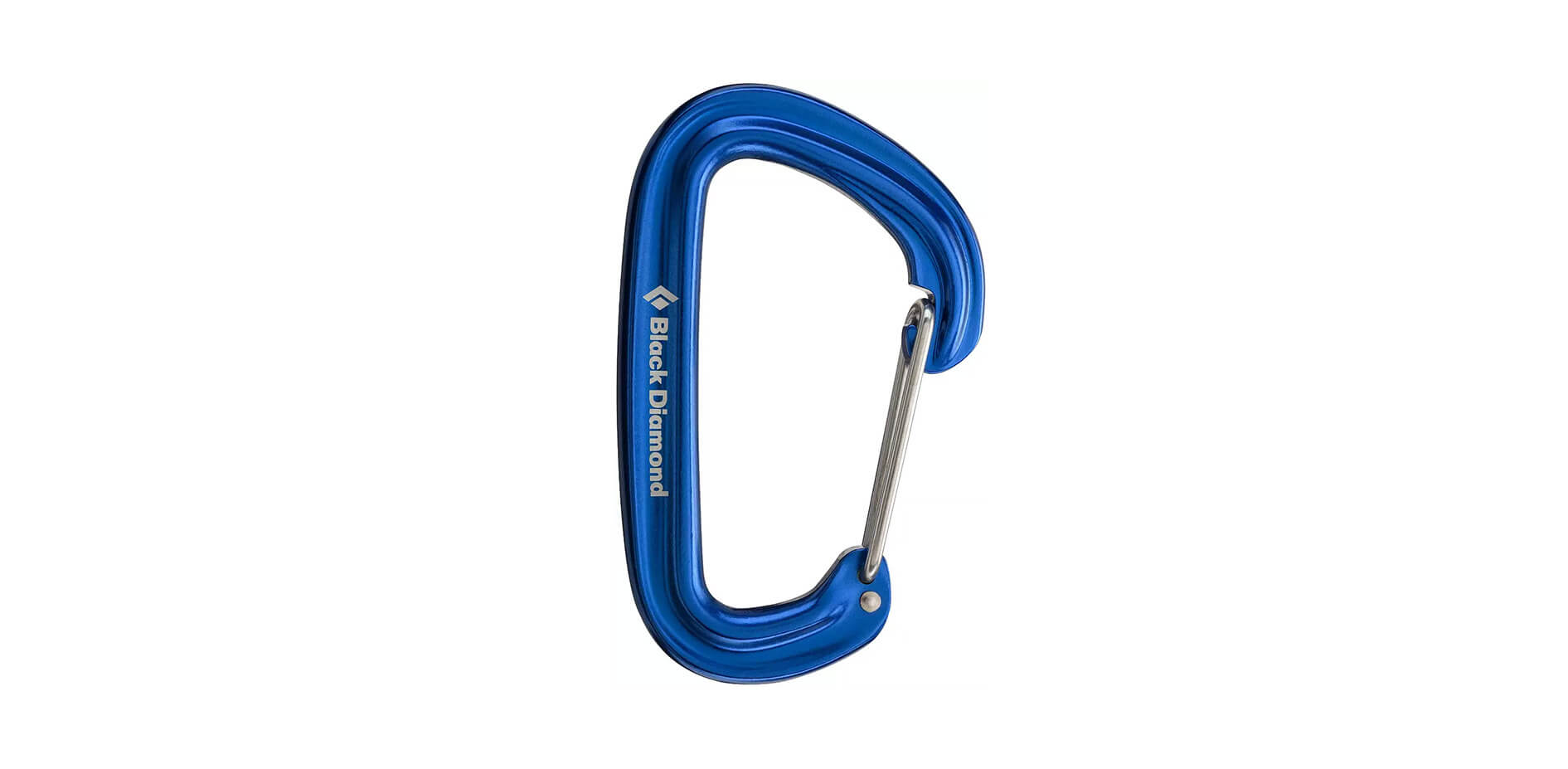
Solid-gate carabiners, on the other hand, have a solid aluminium bar across the gate opening. The end of the bar usually has a key-like recess where it connects with the nose of the carabiner. The advantage of this design is that it does away with the aforementioned notch, making solid-gate carabiners easier to unclip from certain types of bolts.
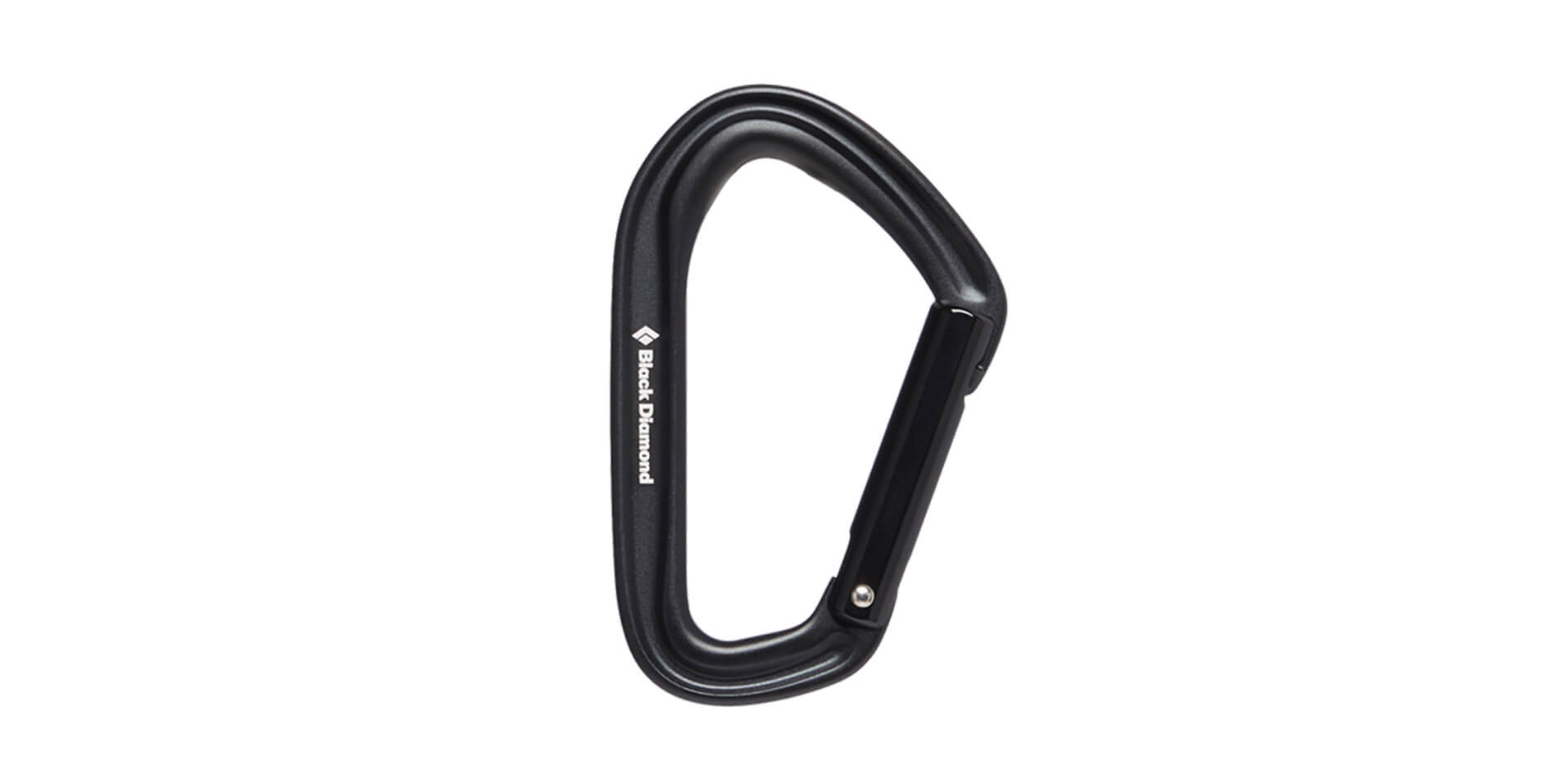
The only drawbacks to a solid-gate design are a little additional weight and the potential for gate flutter. Gate flutter occurs when the vibrations created in fall cause the gate of the loaded carabiner to ‘flutter’ open. This is not ideal as a carabiner’s open-gate strength is only one-third of its closed-gate strength. But it’s also not enough of a detraction to put off solid-gate fans.
Bent vs straight gates
Both solid-gate and wire-gate carabiners come in two varieties: bent gate and straight gate. As the name implies, straight gates are perfectly straight from the pivot point to the nose. These can be found at both ends of quickdraw quickdraws (especially wire gates) and are the more common gate shape.
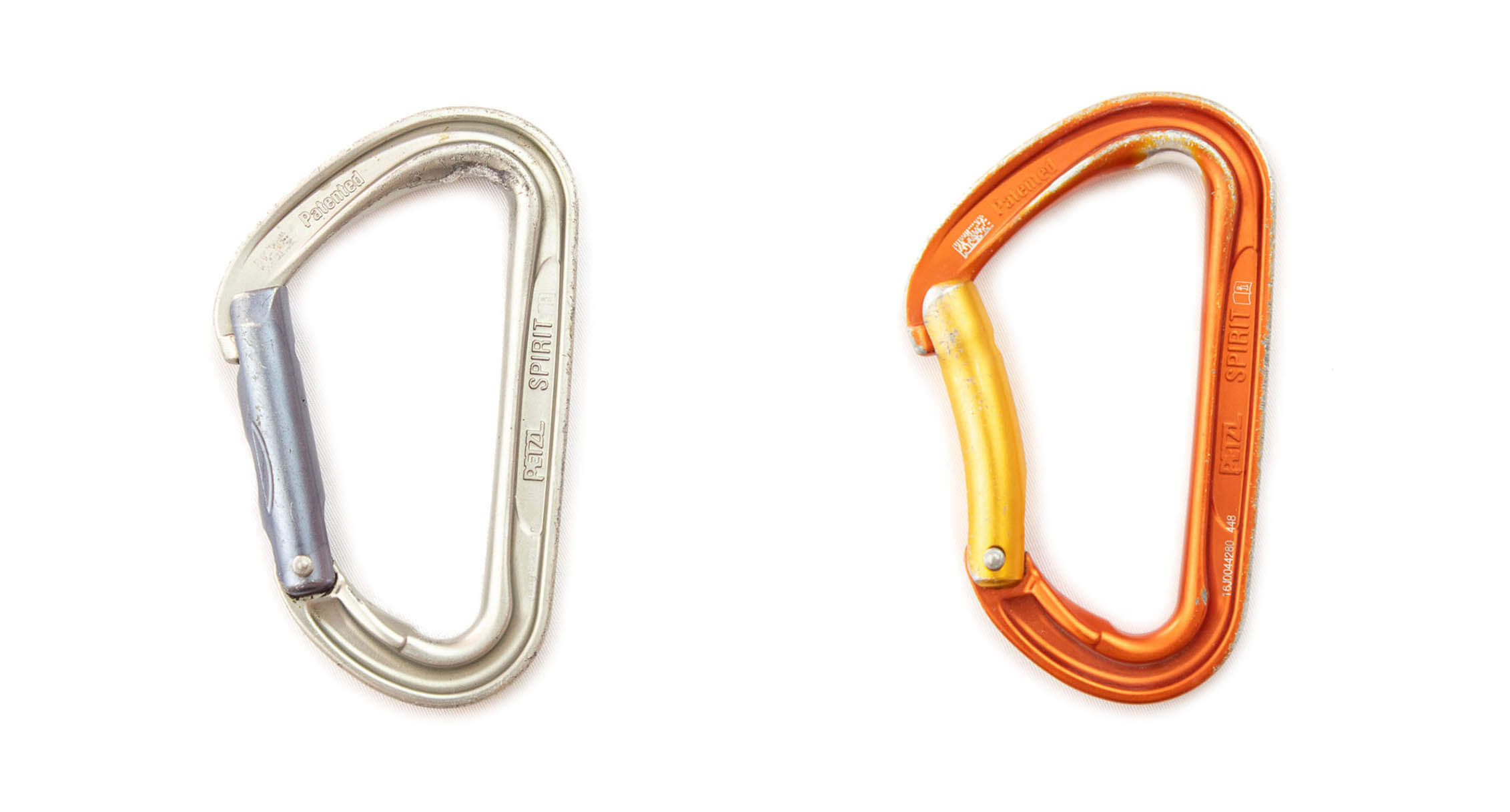
Bent-gate carabiners differ in that they have an inwardly curved gate that makes clipping a rope easier. It’s for this reason that you will only see bent-gate carabiners on the rope-end of a quickdraws. Both wire gates and solid gates can be bent, but the bend makes a bigger difference in solid gates, which have a smoother, rounder profile and can be harder to push the rope through if there is no crook to nestle the rope into.
Clean vs notched noses
In the last ten years, almost all carabiner manufacturers have started making their solid-gate carabiners with a keylock nose. This design does away with the traditional notch and prevents the carabiner from catching on bolts hangers. While this is a great solution for sport draws, it still leaves gear designers scratching their heads over wiregate carabiners.
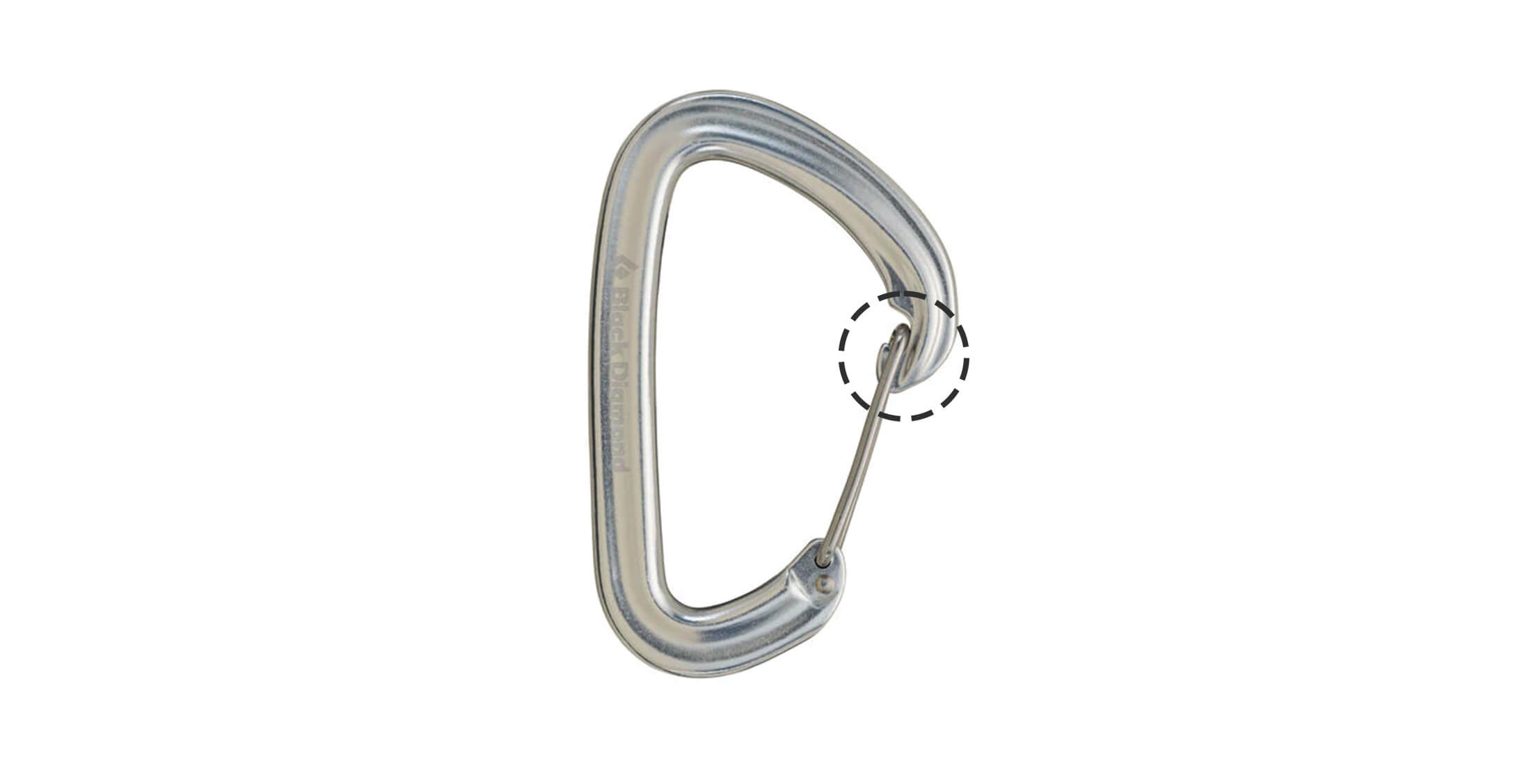
Achieving a clean-clipping nose with a wire-gate carabiner isn’t nearly as simple, and manufacturers have had to resort to all sorts of innovative solutions. Petzl’s Ange S and Ange L use a single but thicker wire filament that slots into a keylock-type nose while Wild Country and Black Diamond have stuck with a more traditional U-shaped wire-gates but with noses that hide the end of the gate in a recess or cage to prevent it from snagging. This design does add a little extra weight to a regular wire-gate, but if you want a clean-clipping wiregate for your bolt-side biners, this is the way to go.
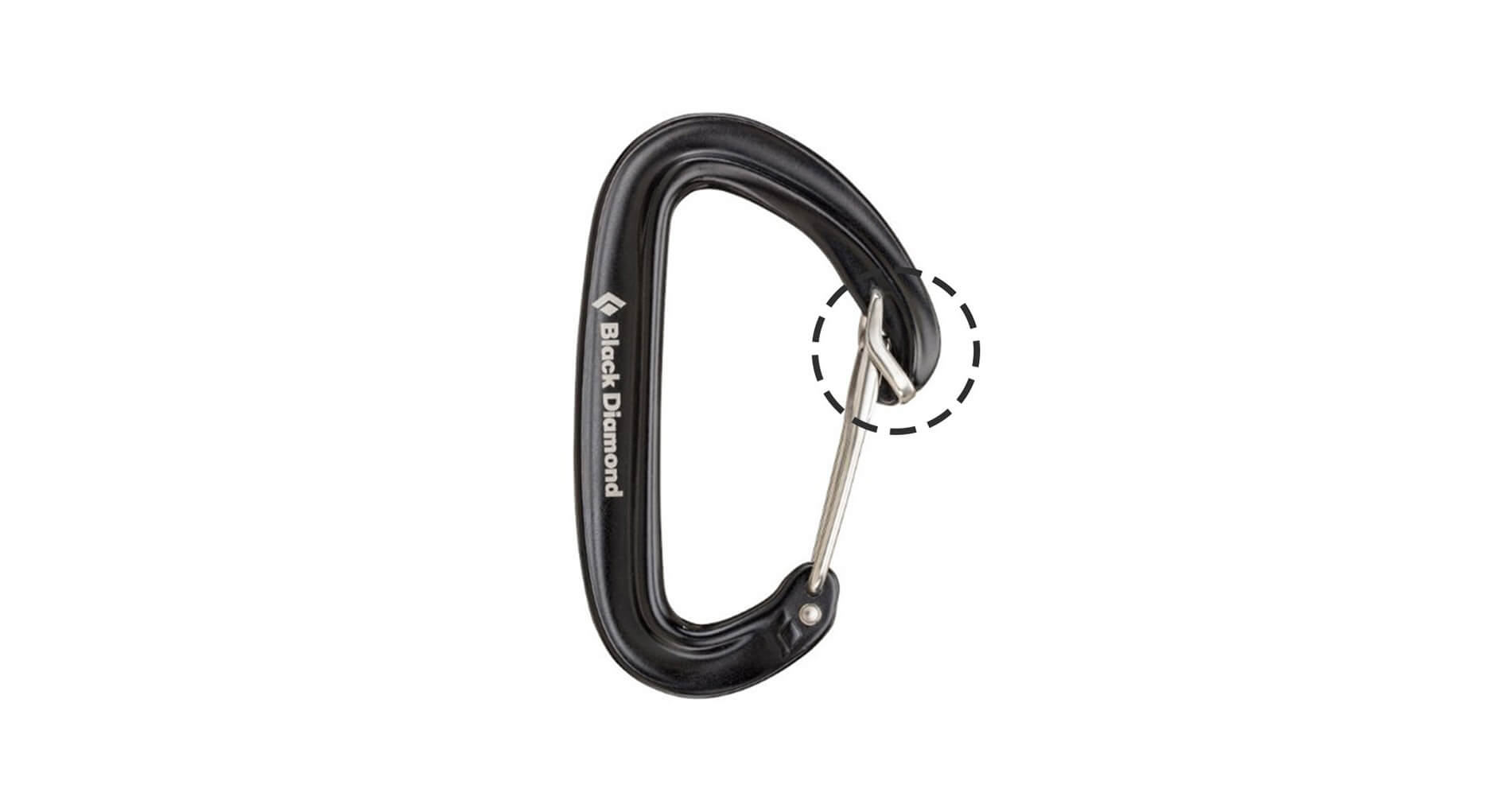
When would a clean-clipping nose on wire-gate be a priority? When you are likely to climb a lot of mixed routes and want to keep the rack of your rack down while also making it easy for a follower to unclip quickdraws from bolts. If having very light draws is not a priority, it might be better to simply use a solid-gate carabiner on the bolt-end of the quickdraw and a wire-gate carabiner on the rope-end, if that is your preference.
Carabiner size and gate opening
Beyond gate and nose type, the width of a gate and the size of a carabiner itself have the biggest effect on how a carabiner performs. A full-size carabiner is easier to hold while you’re trying to make a clip, and a larger gate accepts even a 10 mm single rope easily enough. However, when carabiners get smaller, as they do when they need to be lighter, they also become more fiddly.
A gate opening of 23 mm is still large enough for a general purpose quickdraw, but anything smaller than this will put you into ultralight territory, where you will definitely notice the effect of size on performance. You might not have too much trouble clipping a half rope through a carabiner with a 21 mm gate, but doing the same with a 9.5 mm single rope can require significantly more effort.
Colour-coding
To make it easier to tell a bolt-end carabiner from a rope-side biner when you’re racking up, most manufacturers use different colours for each of the carabiners. The norm is now to use dull colours like black or silver on bolt-side carabiners and bright colours on rope-end carabiners. The theory is that a brightly coloured rope carabiner stands out against the rock, making it easier for climbers to spot and clip when they’re in a hurry.
Dogbones
Dogbones are the short, closed slings between a quickdraw’s carabiners. Depending on the intended use of a quickdraw, the dogbone can be longer or shorter, thicker or thinner, nylon or polyethylene (Dyneema, Dynex or Spectra).
Dyneema, nylon and polyester
The material used to make a dogbone affects its overall weight. Dyneema and other brands of polyethylene are inherently stronger than nylon or polyester and allows slings to be made much lighter and thinner while adhering to the UIAA-required minimum strength of 22 kN. When low weight is a priority, as it is when choosing trad quickdraws, look for quickdraws with slings made from Dyneema, Spectra and Dynex. You can expect to pay a bit more for these.
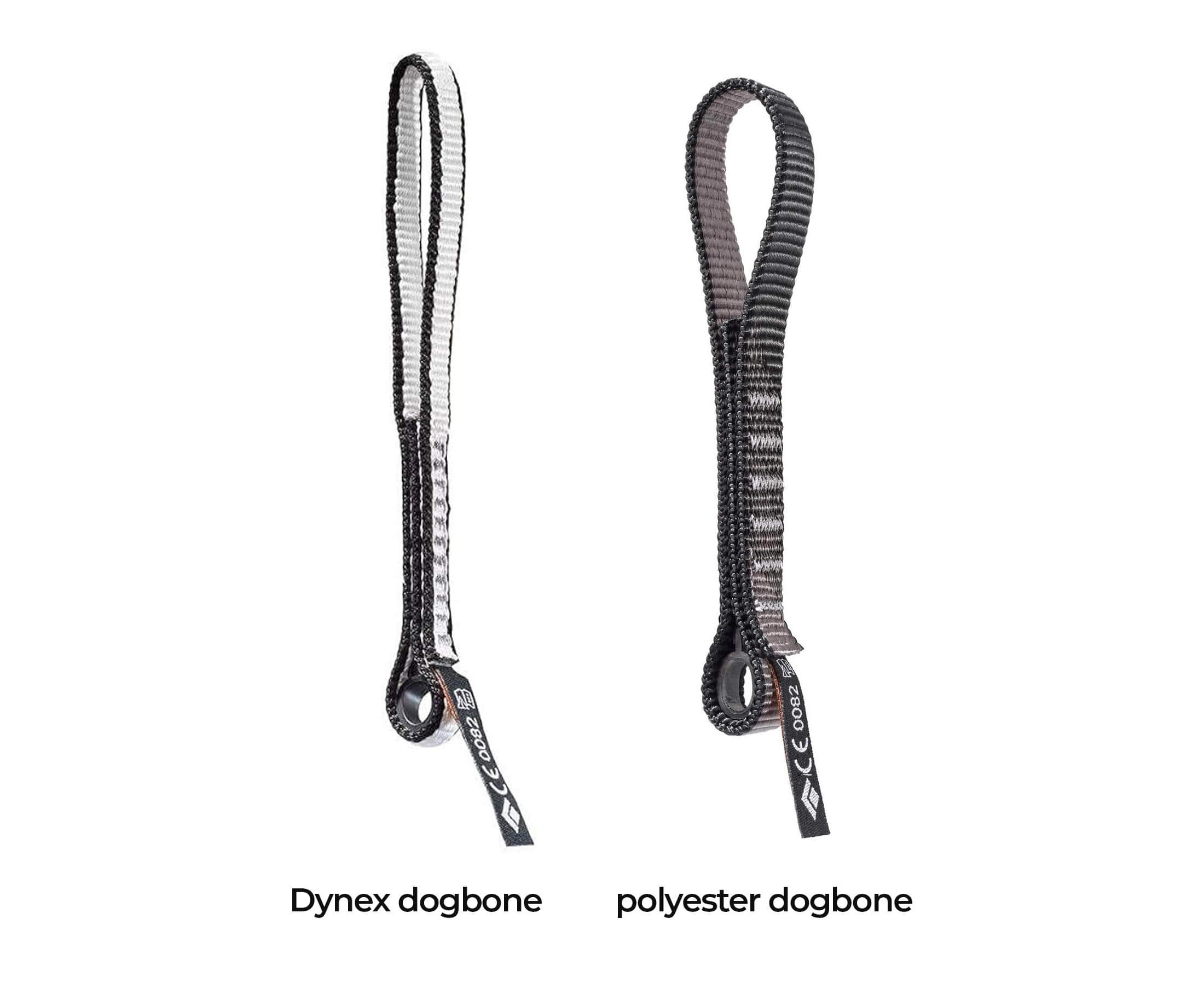
While skinny Dyneema dogbones are best for keeping the weight of your rack down, they offer few advantages for sport climbers. When clipping performance matters more than weight, most climbers find that thick nylon dogbones hold a carabiner better and make it easier to clip. Quickdraws with thicker dogbones are also slightly easier to unclip from a gear loop and are much easier to pull on while working a route. It’s no wonder then that most sport-specific quickdraws have chunky 25 mm dogbones.
Length
After width, length is another important factor in dogbone choice. Shorter dogbones (11 – 13 cm) are slighter lighter and easier to handle, while longer dogbones (16 – 18 cm) make it less likely that a swaying rope will exert any lateral force on the pro-side carabiner – something you want to avoid when placements are less than stellar. Longer quickdraws are also a little better at preventing rope drag, which again is more of an issue on trad routes. When choosing draws for trad climbing I recommend going no shorter than 16 cm.
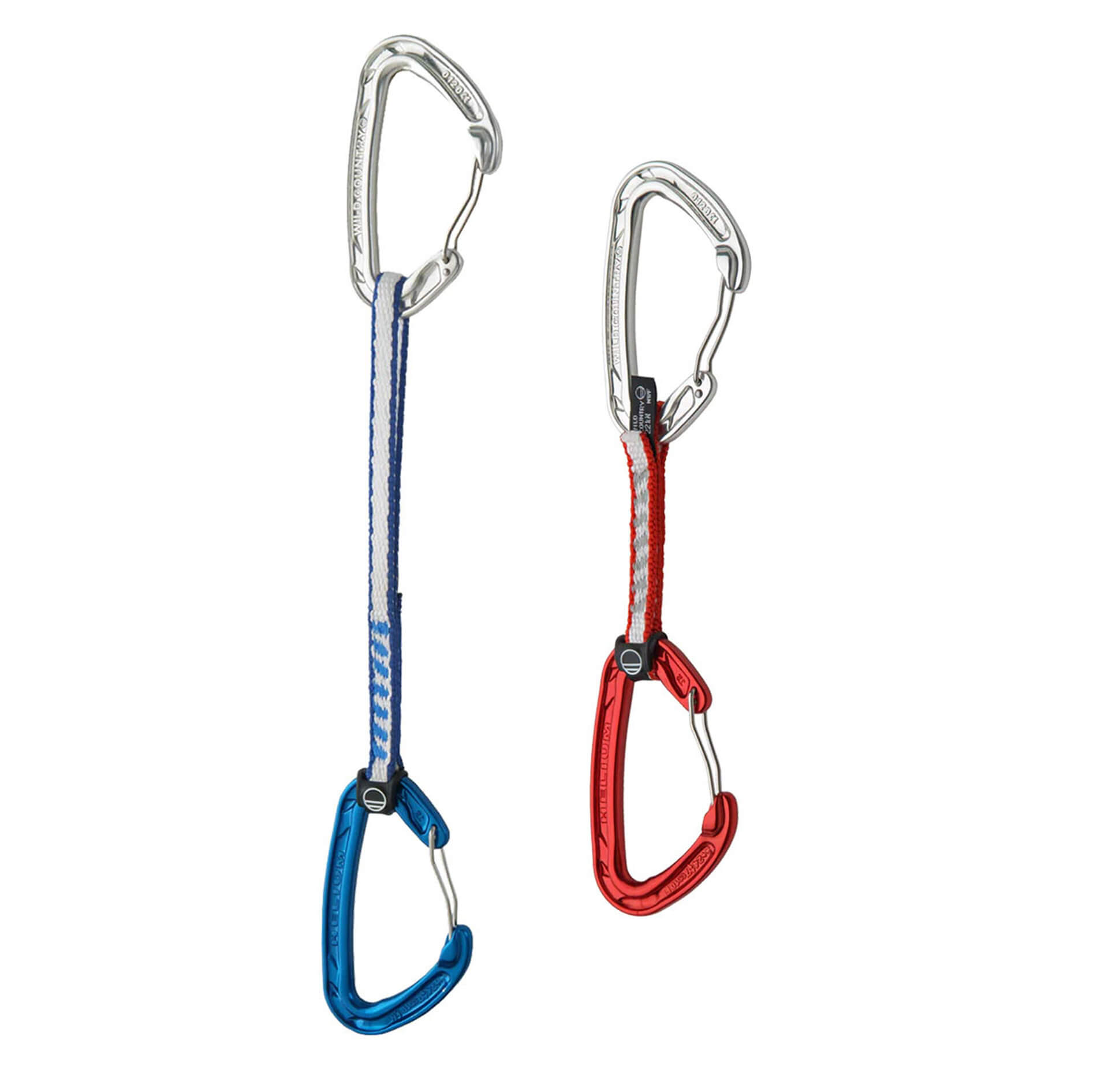
Longer quickdraws can also be useful on sport routes where a shorter draw would position the rope-side carabiner over an edge. In such situations a longer draw can put the carabiner just beyond that edge, negating the risk of broken biner. I recommend having at least two longer quickdraws in your sport rack for this exact reason. It would be best to keep them stowed on a rear gear loop until you need the extra centimeters of extension.
Rubber keepers
The rope-side carabiner is held in place by a rubber keeper that stops it from swinging around while you’re trying to make a clip. On some quickdraws, like those made by Black Diamond, the keeper is a little rubber sleeve on the inside the loop at end of the dogbone. This is sufficient for the average draw, but ‘sufficient’ isn’t good enough for some manufacturers. Petzl have taken things a step further and put a kind of rubber boot over the ends of their dogbones, which protects the dogbone and makes the rope-side carabiner even more stable.
Size, weight and clipping performance
All quickdraws have to pass UIAA and CE standards, making them more than strong enough for their intended use. So strength isn’t really a factor. But you will want to give some thought to clipability and weight. There are full-sized quickdraws that clip very smoothly and are equally easy to clean from a route, and there are ultralight quickdraws that are a bit fiddly but then weigh next to nothing. You don’t get quickdraws that weigh 65 g and clip like quickdraws which weigh 95 g. You have to make either weight or clipability a priority and be prepared to compromise on the other.
Weight
If weight is a priority for you, you can narrow down your options right away. For trad climbing, you can consider any quickdraw over 85 g to be heavy. Start your search by looking at wire-gate quickdraws in the 70 to 75 g weight range as these usually offer a nice balance between low weight and clipping performance with gates between 23 and 26 mm. You can go lighter than this, but then handling and clipability are likely to be compromised. I would only recommend true ultralight carabiners when a light rack is crucial – alpine climbing and other fast and light missions. The difference between a 90 g carabiner and a 70 g carabiner might only be 20 grams, but when you multiply that over a rack of 10 quickdraws, that’s 200 grams.
Clipability
There are actually two aspects to a quickdraw’s performance: the ease with which a rope can be clipped through the rope-end carabiner and the ease with which the quickdraw can be unclipped from a bolt (Clipping a quickdraw to a bolt is usually straightforward enough and is not a factor). Depending on the style of climbing, both factors can be important.
Rope-side carabiner clipping
A smooth-clipping rope-end carabiner is desirable regardless of the intended use of a quickdraw. Beyond a carabiner’s size, which is perhaps the most obvious factor affecting a carabiner's handling, there are four features that affect how well a carabiner takes rope. The first is gate opening. Up until a point (around 24 or 25 mm) wider gate openings accept a rope more easily. Go any smaller than this, and you’re likely to find that clipping feels a little more finicky, although the difference is less noticeable if you use half ropes.
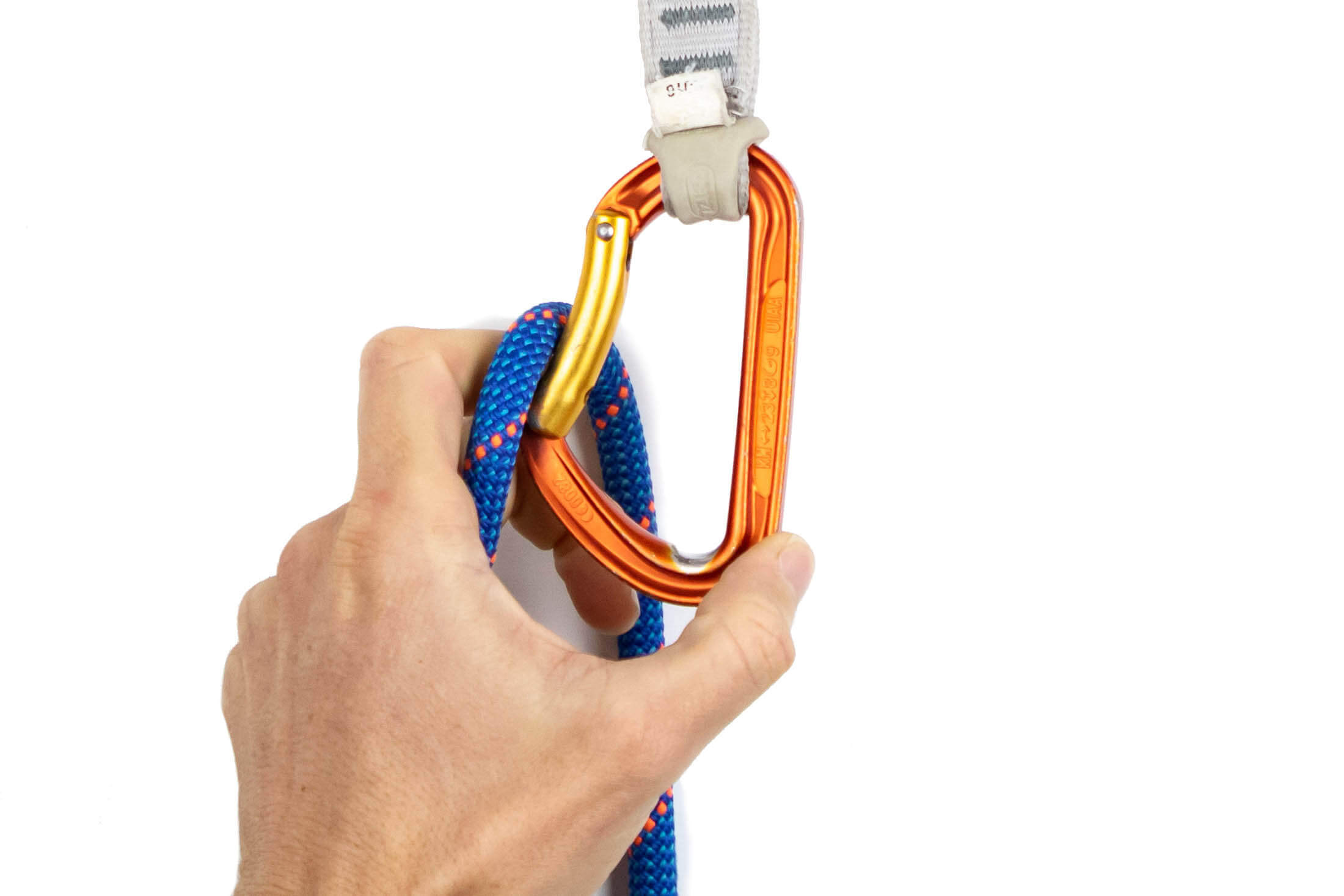
The next two features are gate action and shape. A gate with a nice smooth action (low inertia) is going to clip more smoothly as will a solid gate that has a bend in it. The lack of a bend is less noticeable in wire-gates, which generally clip nicely with straight or bent gates. And the last feature is the dogbone. Sport climbers generally prefer thicker nylon dogbones, which do a better job of holding a quickdraw steady while a climber tries to push the rope through the gate. Climbers who prioritise low weight over optimal clipping performance will usually choose thinner Dyneema dogbones, which have a more flexible carabiner-dogbone connection.
Bolt-side carabiner unclipping
Whether or not it’s important for your bolt-end carabiner to be clean-clipping depends on the style of climbing you are going to use it for. For sport climbing it’s very important to have a keynose (or other clean-clipping nose) on the bolt-end carabiner. A notched nose can easily get caught on bolt hangers and make getting your draws off a route more difficult than it needs to be, especially on steeper climbs. Nobody wants to have to make several attempts to just get a quickdraw off the wall, but that’s exactly what can happen when you find yourself hanging on a quickdraw with a notched nose.
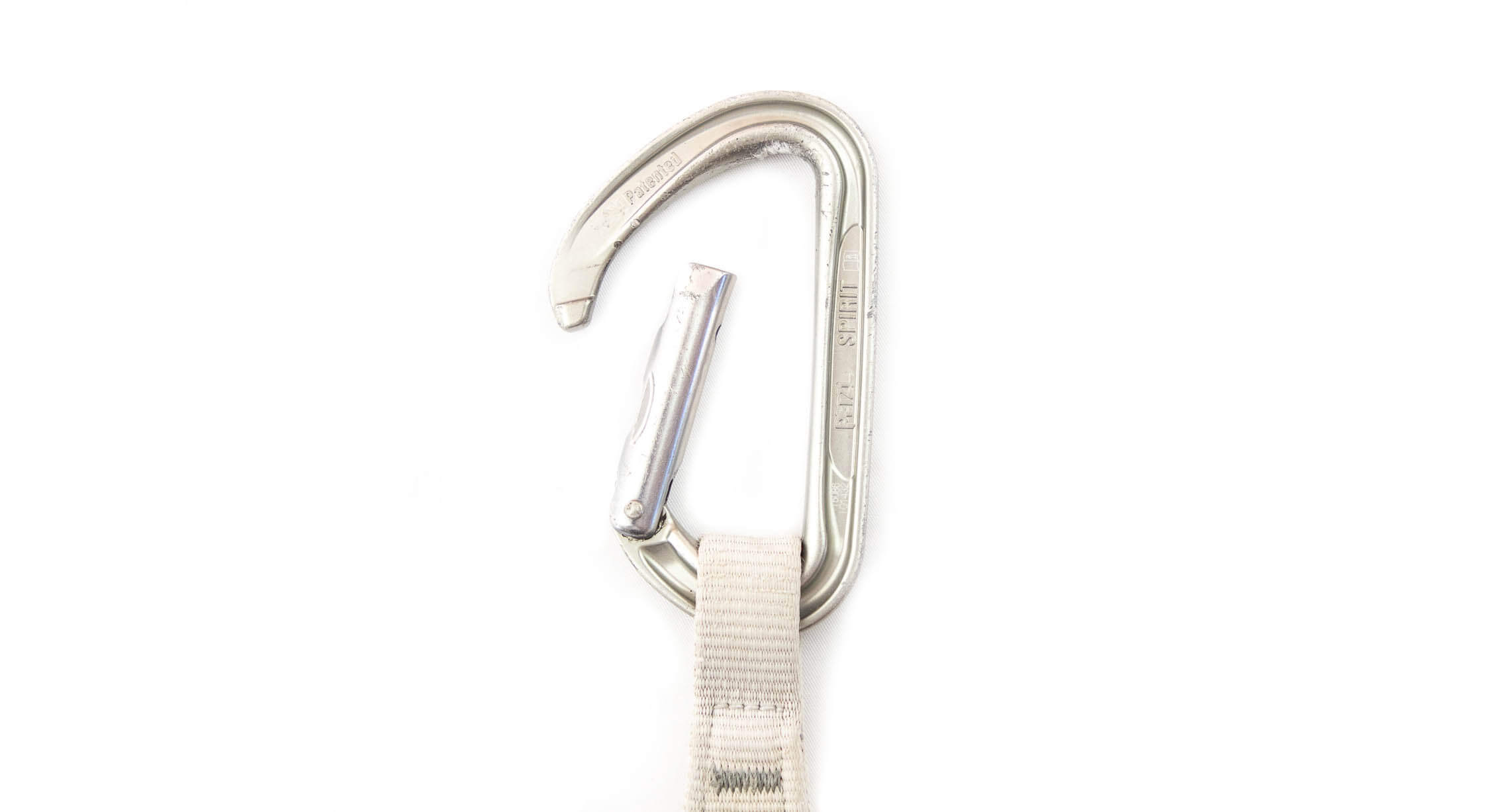
For trad climbing a clean-clipping nose is less of a priority as you are a lot less likely to clip bolts. Also, even if a notched carabiner can catch on a wire, this usually won’t hold up a climber like a stubborn quickdraw on a sport route will. Trad routes are usually cleaned by the follower and while the rope is slack, making it much easier for the climber to manoeuvre a wire out the gate without it getting caught on the notch. If you intend to climb a lot of mixed routes, maybe a clean-clipping nose on the pro-end carabiner can be a high priority. Otherwise, it’s really only a nice-to-have.
Price
Normally, I’d tell a bargain-hunting first-time buyer that it’s a good idea to go with an inexpensive option since he or she will have to replace it in a year or two anyway. But that’s not the case with quickdraws and carabiners. If you look after your hardware, it can last over a decade, and if there’s one type of gear you want to buy right the first time, it’s your carabiners and quickdraws. This is especially true for trad climbers, who will see a bigger difference between a $14 quickdraw and a $20 quickdraw even if that’s only measured in weight (no small thing).
Quickdraws for different types of climbing
Different types of quickdraws are better suited to different types of climbing. Here are some features to look for in draws intended for sport, trad, alpine and all-round climbing.
Sport climbing
The most important things to look for in a sports quickdraw are durability and clipability – when clipping the rope through into the rope-end carabiner and when unclipping the bolt-end carabiner from a bolt. Sport climbers subject their quickdraws to a great deal of abuse by falling on and lowering off them frequently. To handle this wear and tear, it’s best for sport quickdraws to be fitted with beefy full-sized carabiners that have a wide, rounded profile in the rope basket.
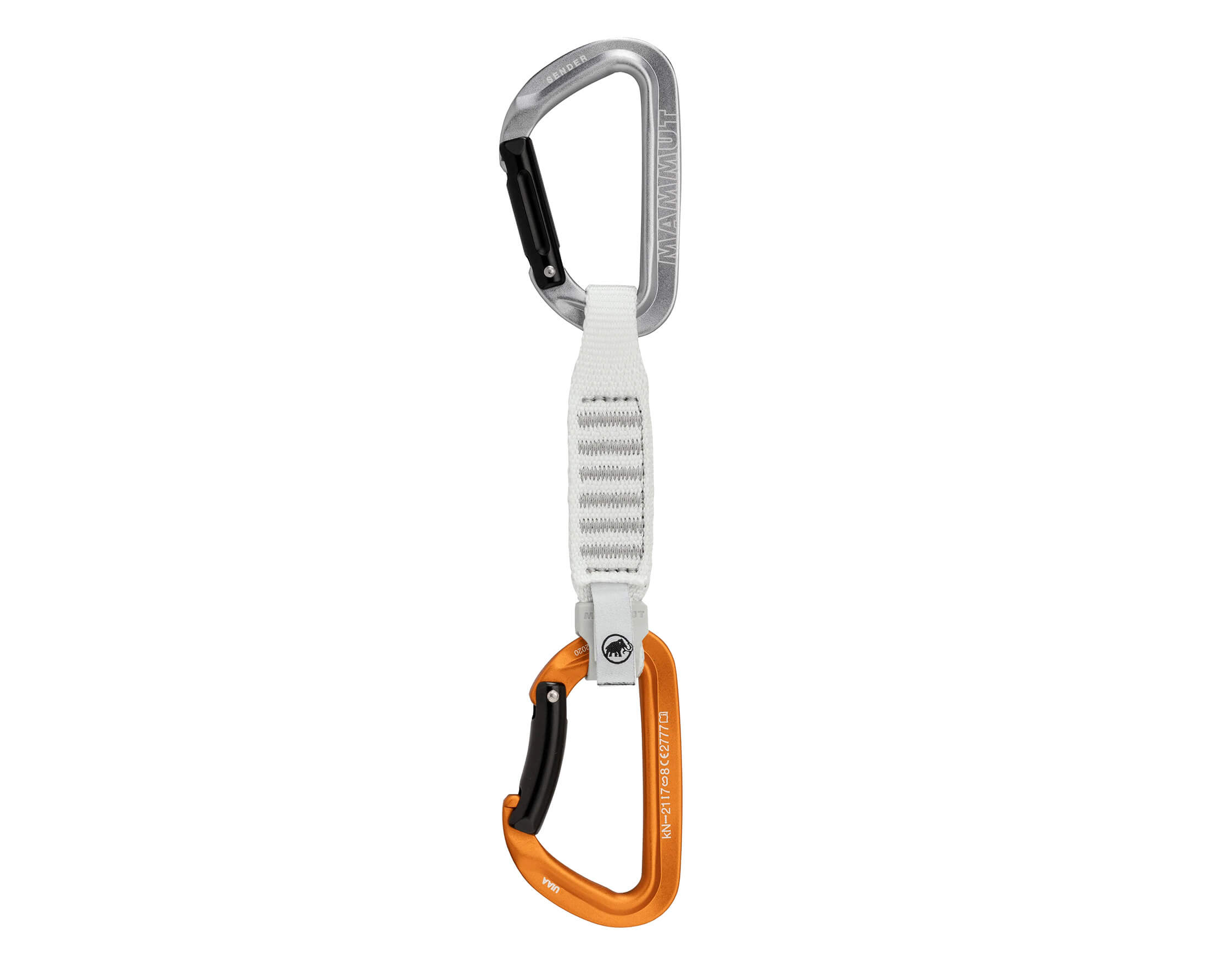
On the bolt-end of the quickdraw, it's best to have a keylock solid-gate to ensure that the draw is easy to unclip from bolt hangers, while on the other end of the quickdraw, you could have either a wire-gate or bent solid-gate. Most sport-specific draws also have thick nylon dogbones that help steady the rope-end carabiner during clipping and make the quickdraw easier to pull on while a climber is working a route. In a rack of 16 sport draws it’s a good idea to have at least a few longer draws (16 – 18 cm).
| weight | gate opening (rope-end carabiner) | |
| Petzl Spirit Express | 89 g | 24 mm |
| DMM Alpha Sport | 112 g | 25 mm |
| Black Diamond HotForge Hybrid | 104 g | 27 mm |
| Wild Country Proton Sport | 116 g | 25 mm |
Trad climbing
Besides needing to be lighter than sport quickdraws, trad draws need to be longer to reduce rope drag and to prevent the action of a swaying rope from dislodging gear. That means skinny Dyeema dogbones between 16 and 18 cm long with light wire-gate carabiners on either end. The best carabiner for a general trad draw will be somewhere between 66 and 75 grams in weight and have a gate opening of 23 to 25 mm (full-sized or slightly smaller).
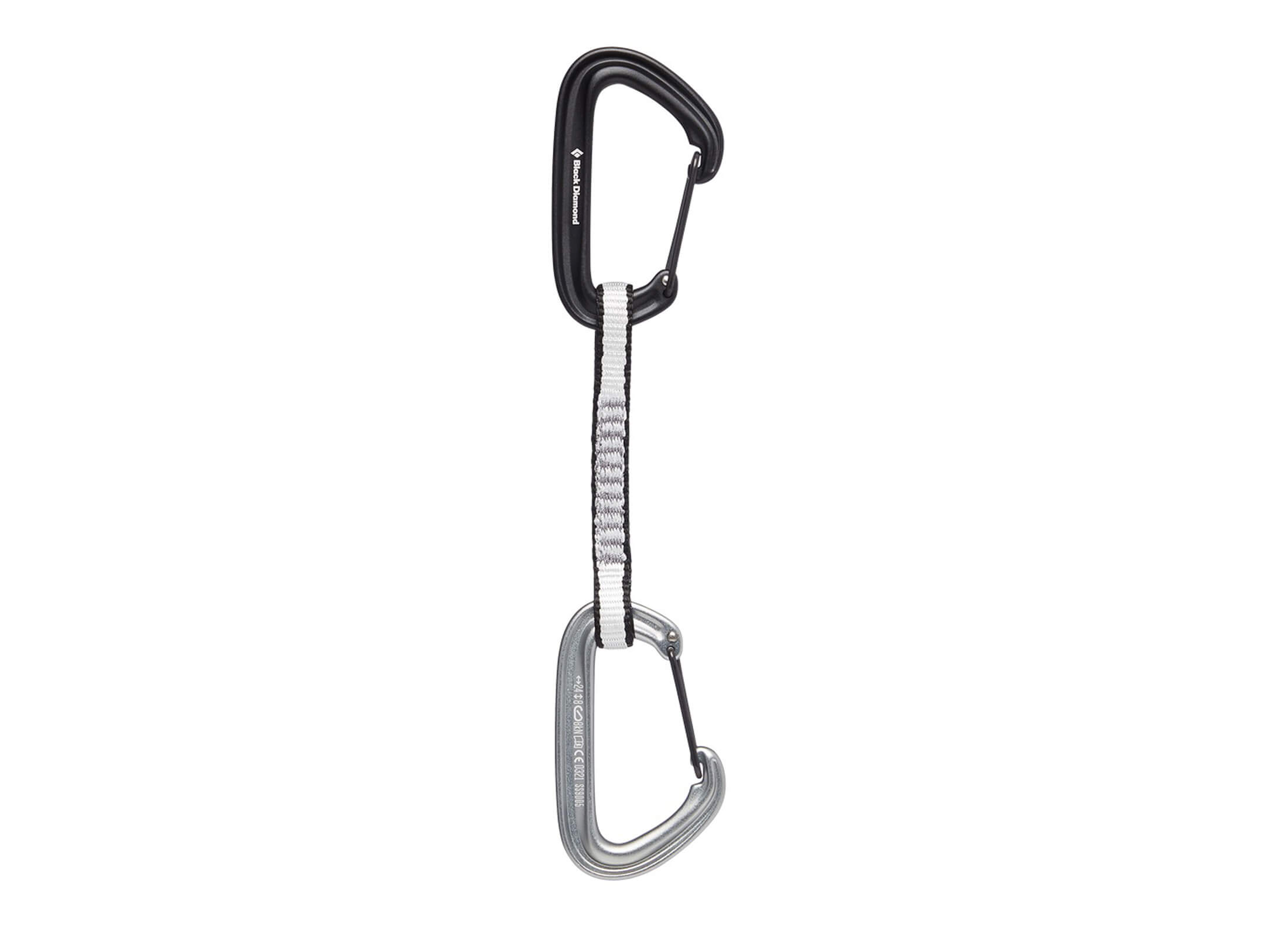
Beyond these, you might want to also consider how a quickdraw’s carabiners are colour-coded. Because the norm is to have straight wire-gates on both ends of a trad quickdraw, it’s even more useful to have different colour biners to make it easier to tell which is which at a glance. Some climbers might prefer for the colour scheme of their trad draws to match their sport draws (dull colour on one side end and a bright colour on the other), but I find it more useful to simply have the pro-end carabiners on my trad draws a different colour to the carabiners on my alpine draws (silver). That way I’m less likely to grab a quickdraw when I need an alpine draw.
| weight | gate opening | |
| Black Diamond LiteWire | 73 g | 23 mm |
| DMM Spectre | 75 g | 23 mm |
| Camp Photon | 69 g | 26 mm |
| Wild Country Astro | 66 g | 24 mm |
Alpine climbing
When your motto is fast and light, only the most featherweight quickdraws will do. Enter the ultralights. While some climbers use these smaller quickdraws for general trad climbing (as I did at first), I don’t recommend it. While they work well with half ropes, they can make clipping a thicker single rope more finicky. Again this is less of a factor in alpine climbing when you are on easier terrain and you have more time to make a clip. As with trad, it’s better to have longer dogbones to help prevent gear from being pulled out of place by the rope and to help reduce rope drag.
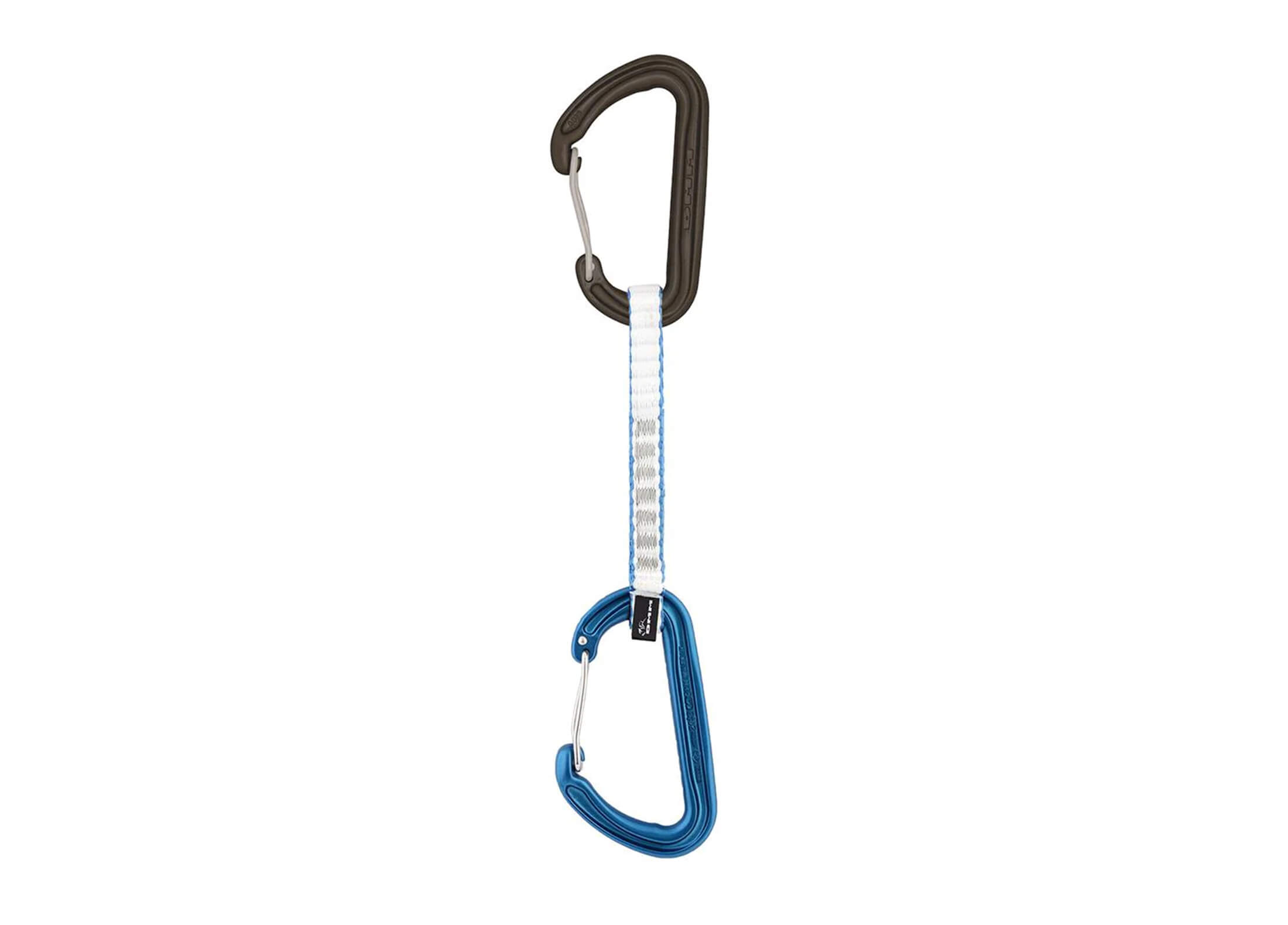
As with the list of recommended trad quickdraws, most of the quickdraws listed below are wire-gates. I say most because the Petzl Ange S Finesse is a bit of a hybrid. It has a single wire-filament gate that slots into a recess in the nose much like a solid-gate. The result is a clean-clipping ultralight quickdraw with a generous (for the weight) 23 mm gate opening – everything you’d want in a fixed-length quickdraw for alpine climbing.
| weight | gate opening | |
| Petzl Ange S Finesse | 65 g | 23 mm |
| Black Diamond MiniWire | 53 g | 21 mm |
| DMM Phantom | 65 g | 21 mm |
| Camp Nano | 56 g | 17 mm |
How to set up your quickdraws
Quickdraw carabiners can be set up in two possible orientations: with both top and bottom carabiners facing the same direction or opposite directions. Both orientations work, and some manufacturers even ship their quickdraws with the carabiners facing opposite directions. But the consensus is that it’s better to have your carabiners facing the same way. Here’s the reasoning. Quickdraws must be placed with the gate on the bottom (rope-end) carabiner facing away from the direction of travel. This is done for two reasons: it reduces the risk of the rope unclipping itself from the quickdraw, and it loads the carabiner along its spine, where it is strongest.

The implications for carabiner orientation are this. When you climb and the quickdraw is pulled slightly sideways, the top carabiner rotates around the bolt. If the carabiner gates face the same direction, both gates will be facing diagonally down, and gravity will ensure that the rope basket of the top carabiner rests on the bolt hanger, putting the carabiner in its strongest orientation. If the gates were opposed, there would be a chance that gravity could pull the carabiner into an orientation where the nose of the carabiner rested on the bolt. Loading a carabiner this way weakens it significantly and even raises the risk of the carabiner unclipping itself from the bolt.
The other reason to set up your quickdraw with gates facing the same way is that it also makes it easier to place a quickdraw so that the bottom gate faces the right direction (away from the direction of travel) if both carabiners are facing the same direction. You only need to look at the bolt-side carabiner, which will be in your hand, and think ‘This way – away from the direction of travel’. Opposite-facing gates would require you to remember that the rope-end biner faces the other way and then flip the quickdraw to ensure that it’s properly oriented. This might seem like a small thing, but when you’re pumped and panicked, having gates facing the same way makes a proper placement a lot more intuitive.
How to rack quickdraws
Sports climbers rack most of their draws on their front gear loops while tradsters rack them on their rear loops (for reasons explained in my article on how to rack trad gear). But then there is also the question of gates in or gates out. The advantage of gates-out racking, especially for trad climbers, is that it positions a carabiner’s nose and gate away from the climber. It’s only natural that the deepest part of a carabiner’s rope basket will come to rest on the gear loop, but this causes carabiners that are clipped gates-in to poke into the hips of the climber.
This is less of an issue with molded gear loops, but on other harnesses, the nose of the carabiner is likely to force the biner to sit on the gear loop at an angle, which can make it more difficult to get to. Despite this drawback, there will be climbers who still prefer to clip gates-in, and that’s okay. Just know that if you use this method, you must be consistent and clip all carabiners to your gear loops with their gates facing in.
How many quickdraws do you need?
The number of quickdraws you need depends on where you climb and the type of climbing you do. The average sport rack has between 14 and 18 quickdraws in it, but I recommend looking through the guidebooks of areas you want to climb and noting the number of bolts on the average route. Bear in mind that most routes need an additional two quickdraws for the top anchors. Deciding on the number of quickdraws you need for your trad rack can be a little trickier.
To protect a full-length trad pitch, you will usually place around 12 pieces of gear. To connect these to the rope, you will need as many extensions. That usually means a combination of quickdraws and alpine draws (extendable slings that are stored tripled-up with carabiners on either end) although the ratio will differ from rack to rack depending on how frequently you need longer extensions. For most climbers, six of each will suffice. If you find yourself climbing a lot of continuous cracks, you might want to get four more quickdraws and then swap these out for a few alpine draws when a route doesn’t require longer extensions.
What if you need a longer extension?
Even on sport routes, there will be occasions when your longest quickdraw isn’t long enough. In such instances, you can combine quickdraws by removing the bolt-end carabiner from one quickdraw and clipping that end of the dogbone to the rope-end carabiner or a second quickdraw. You can even do this a second time to link three quickdraws, but there’s an easier alternative – carry alpine draws when you need longer extensions.

An alpine draw is a tripled single-length (60 cm) sling with a carabiner on either end. In its unextended form, it is only a little longer than a long quickdraw and can be used as such. And when extended, it’s a full 60 cm – long enough to prevent rope drag in most situations where a route meanders. Although commonly used on trad climbs, alpine draws are also useful on sport climb onsight attempts, as they can easily be extended with one hand whereas combining two quickdraws requires two hands or a bit of faff with one hand.
Get more advice from this gearhead
You now have everything you need to know about quickdraws. But don’t stop here. On this website you’ll find many more in-depth gear guides on everything from ropes to rock shoes as well as many more how-to articles. You can find these under the different sections in the categories menu, or, better yet, sign up for my newsletter to get all the latest from Trail & Crag delivered straight to your inbox.
